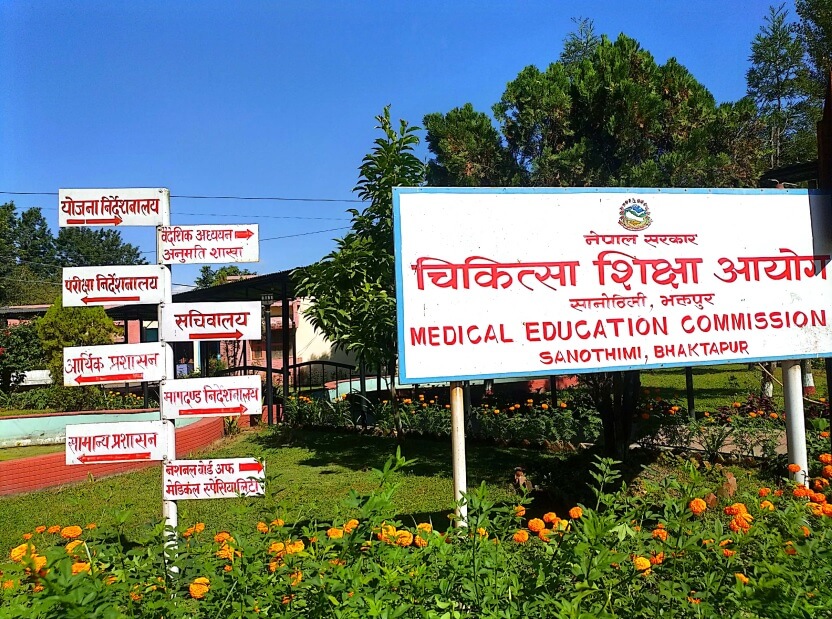
Medical Commission Unable to Add Government MBBS and Nursing Quotas
The Medical Education Commission has clarified that it could not increase MBBS and Nursing quotas in government medical colleges because the Ministry of Finance did not provide financial support.
Commission Vice-Chairman Prof. Anjani Kumar Jha explained that although government medical colleges across the country are well-equipped with adequate infrastructure to produce skilled manpower, the Ministry of Finance’s failure to allocate sufficient budget prevented the addition of seats.
Current Status of Medical Colleges
-
Across Nepal, 89 medical colleges are operating undergraduate programs in 17 medical disciplines.
-
Out of these, only 15 colleges (26 percent) are government-run.
-
Data show that while quotas are being increased based on market demand, the majority benefit private colleges, while government colleges remain restricted.
-
90 percent of newly added quotas went to private colleges, while MBBS remains the main attraction for students with the highest demand.
Recent Quota Decision
The 21st meeting of the Commission on Shrawan 29 decided to add 495 new MBBS seats.
-
Out of this, 130 quotas were allocated to government institutions.
-
The government approved two new public institutions to begin MBBS programs this year:
-
Purvanchal University: 50 seats
-
Madan Bhandari Academy of Health Sciences: 50 seats
-
-
Kathmandu University also received 30 seats under the government quota, totaling 130.
This shows that while 73.73 percent of MBBS quotas were added to private institutions, only 26.26 percent were added to government institutions.
Statement from the Commission
Prof. Jha stated:
-
Government colleges have sufficient infrastructure and facilities to produce competent medical doctors within the country.
-
Each year, the government provides scholarships worth Rs. 5 billion to medical students under the provision of 75 percent full scholarships in government institutions.
-
The Ministry of Finance declined to provide an additional budget, citing financial burden.
-
As a result, only 25 percent of additional MBBS seats could be allocated to government colleges this year.
He further clarified that government institutions have capable teaching faculty and resources to accommodate more students if sufficient budget is allocated.
Total Quota Increase in 2082
-
The Commission increased 1,398 seats this year to strengthen domestic production of skilled medical professionals.
-
The decision was made during the 21st meeting chaired by Prime Minister and Commission Chairperson KP Sharma Oli at Singha Durbar.
-
The increase was justified based on the growing demand for Nepali medical doctors in the global market.
Expert Opinion
Education expert and former Tribhuvan University Vice-Chancellor Kedar Bhakta Mathema highlighted:
-
Increasing quotas mainly in private colleges while restricting government quotas is not in students’ interest.
-
His commission’s report in 2072 had recommended banning new private medical colleges in Kathmandu Valley for 10 years and permitting them only based on necessity and research.
-
Failure to expand government quotas means allowing private institutions to profit from medical education.
Mathema remarked that:
-
In the past, colleges admitted up to 160 MBBS students arbitrarily through their own entrance exams, turning medical education into a profit-making business.
-
To address this, the Medical Education Commission was established, implementing a one-door system for entrance exams, admissions, college selection, and fee determination.
He questioned the Commission’s basis for adding seats without clarifying whether the increase was due to shortage of manpower or improved infrastructure.
Concern Over Privatization
Mathema further expressed concern that:
-
Increasing 90 percent of quotas in private colleges while restricting government seats may lead to commercialization of medical education.
-
Since the Constitution emphasizes socialism-oriented education, restricting government quotas while expanding private ones cannot be viewed positively.
-
The Ministry of Finance should provide adequate funding to expand government quotas where infrastructure and teaching facilities already exist.
Increase in MBBS, Nursing, and BDS Seats
-
MBBS: Previously 2,140 seats, increased by 495 to 2,635.
-
BSc Nursing: Previously 1,990 seats, increased by 440 to 2,430.
-
BDS: Previously 575 seats, increased by 50 to 625.
Current Programs and Institutions
According to Dr. Padam Bahadur Khadka, Commission member and President of the Association of Private Health Institutions Nepal (APHIN):
-
There are 89 institutions (government and private) offering undergraduate medical education.
-
75 percent of these institutions are private.
-
Nepal currently offers 17 programs: MBBS, BDS, BSc Nursing, BNS, BMS, BPH, BPT, BAMS, BASLP, BSc Radiotherapy, BSc MLT, BSc MIT, BSc Clinical Psychology, BPharm, BSc Midwifery, BOP IOM, and MBBS.
He added that while the government provides 75 percent full scholarships equivalent to Rs. 5 billion annually, private colleges also offer 10 percent full scholarships for admissions.
The Ministry of Finance refused to allocate additional funds to expand government quotas, stating it could not bear the extra financial burden.
Impact on Students
The Commission believes that increasing MBBS and Nursing seats will help reduce the problem of students going abroad and prevent the outflow of Nepali capital caused by limited quotas within the country.
Medical Education Commission (MEC)

